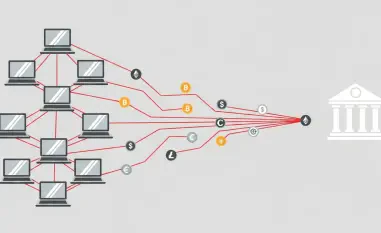What happens when the very keys to an enterprise’s digital kingdom fall silently into the wrong hands? In today’s hyper-connected business landscape, a staggering 80% of data breaches involve compromised credentials, according to industry reports, revealing a pervasive and often invisible danger that threatens organizations of all sizes. This alarming statistic underscores a critical issue that demands immediate attention, as every login and password represents a potential entry point for cybercriminals who operate with ruthless efficiency. The consequences of inaction can shatter trust, drain finances, and derail operations in an instant.
The Silent Crisis Unfolding in Digital Shadows
At the heart of this escalating problem lies a simple truth: enterprise credentials are the lifeblood of modern business systems, yet they are alarmingly vulnerable. With the rapid adoption of cloud platforms and remote work environments, the attack surface has expanded exponentially. A single weak password or a momentary lapse in judgment can unlock devastating access to sensitive data. The importance of addressing this threat cannot be overstated, as it undercuts the foundation of organizational security in an era where digital transformation is non-negotiable. Understanding and combating credential compromise is not just a technical challenge—it’s a business imperative.
Why Credentials Are Already in Jeopardy
The reality facing enterprises today is sobering: many credentials are likely already compromised, lying dormant until exploited at the most damaging moment. Cybercriminals harvest usernames and passwords through a variety of insidious methods, often targeting employees overwhelmed by the sheer volume of logins required for daily tasks. Password reuse, despite being a known risk, remains rampant, with studies showing that 65% of users recycle passwords across multiple accounts. This habitual shortcut creates a domino effect, where one breach can cascade into widespread unauthorized access.
Beyond individual habits, systemic issues amplify the danger. The shift toward cloud-based services means that credentials are no longer confined to a single network—they span multiple platforms, each with its own vulnerabilities. A breach in one system can grant attackers a foothold across an entire ecosystem. This interconnectedness, while essential for efficiency, transforms a minor oversight into a potential catastrophe, leaving enterprises exposed in ways they may not even realize.
The Mechanics of Theft: How Credentials Are Stolen
Delving into the dark underbelly of credential compromise reveals a systematic and chilling process. The lifecycle begins with creation, where weak or reused passwords are established, often unknowingly setting the stage for theft. From there, attackers steal credentials through phishing emails that mimic trusted sources or through credential stuffing, where automated tools test stolen logins across countless platforms. Once harvested, these credentials are aggregated on underground forums, monetized for profit, and eventually exploited to infiltrate systems or deploy ransomware.
Attack vectors are as diverse as they are relentless. Phishing campaigns often disguise themselves as urgent messages from vendors or colleagues, tricking users into revealing their details. Third-party breaches, where a partner’s security fails, can expose credentials tied to an enterprise’s systems. Even seemingly innocuous mistakes, like an API key accidentally posted in a public code repository, can become a gateway for attackers. Statistics paint a grim picture: over 15 billion stolen credentials are currently circulating on the dark web, ready to be weaponized at any moment.
The criminal ecosystem driving this threat operates like a well-oiled machine. Opportunistic lone actors seek quick gains through low-effort scams, while organized syndicates orchestrate high-stakes attacks targeting specific industries. Automated botnets relentlessly probe systems for weak points, testing thousands of stolen credentials per second. This industrial-scale operation underscores the sophistication and persistence of the threat, making it clear that no organization is too small or too secure to be targeted.
Real Stories, Real Consequences: The Human and Financial Toll
Voices from the frontline of cybersecurity paint a stark picture of the damage caused by credential breaches. Industry experts, citing reports like the Verizon Data Breach Investigations Report, note that stolen credentials are a factor in nearly 80% of hacking-related incidents. Such data highlights the pervasive nature of this issue, transcending industries and geographies. Beyond numbers, the human element adds depth to the crisis, showing how easily a single misstep can spiral into disaster.
Consider the anonymized case of an employee named Sarah, who clicked on a phishing link disguised as an internal memo. Within hours, attackers used her credentials to access critical systems, moving laterally across the network to steal sensitive data. Her company faced not only immediate financial losses but also a ransomware demand that halted operations for days. Such stories illustrate the cascading effects of a breach, where one compromised account can jeopardize an entire organization’s stability.
The long-term fallout is equally daunting, as evidenced by case studies of enterprises hit by credential theft. Regulatory fines for non-compliance with data protection laws can reach millions, while lawsuits from affected customers erode trust. Reputational damage often lingers for years, deterring partnerships and client relationships. These real-world impacts serve as a sobering reminder that the cost of a breach extends far beyond the initial incident, embedding itself into the fabric of a company’s future.
Strategies to Fortify Defenses Against Credential Theft
Arming an enterprise against this persistent threat requires a multi-layered approach grounded in practical, actionable steps. Enforcing strong password policies is a critical starting point—mandating complex, unique passwords and supporting their management with secure tools can drastically reduce risk. Multi-factor authentication adds an essential barrier, ensuring that even stolen credentials alone cannot grant access. These foundational measures address the human and technical vulnerabilities that attackers exploit.
Proactive monitoring is another vital component of defense. Solutions that scan for exposed credentials on the dark web or within public repositories can alert organizations to breaches before they are weaponized. Employee training programs focused on recognizing phishing attempts and practicing safe online behavior further strengthen the human firewall. Regular audits of third-party vendors ensure that external partners do not become the weak link in the security chain, closing gaps that might otherwise go unnoticed.
Technology and policy must work in tandem to create a robust shield. Automated systems can detect unusual login patterns, flagging potential compromises in real time. Meanwhile, fostering a culture of security awareness ensures that every team member understands their role in safeguarding credentials. By integrating these strategies, enterprises can shift from a reactive posture to a proactive stance, mitigating risks before they escalate into full-blown crises.
Reflecting on the Battle Against Credential Threats
Looking back, the fight against credential compromise has revealed both the ingenuity of cybercriminals and the resilience of enterprises determined to protect their assets. Each breach, though devastating, serves as a lesson in the importance of vigilance and preparation. The stories of those affected, from unwitting employees to entire organizations, underscore the human stakes behind the technical jargon. Every incident highlights a shared vulnerability that demands collective action.
The path forward is clear, even if challenging. Enterprises need to prioritize ongoing education, ensuring that every staff member remains alert to evolving threats. Investment in cutting-edge monitoring tools has proven essential, as has collaboration with industry peers to share threat intelligence. By taking these steps, businesses can not only recover from past breaches but also build stronger defenses against future attacks, turning lessons learned into lasting security.













